THE WORLD MUSLIM WOMEN I.T. OPERATORS UNION (WMWI,T,OU)
بِسْمِ اللهِ الرَّحْمٰنِ الرَّحِيْمِﹺ
The World Muslim Women (I.T.) Operators Union
(A Sister Organization
of Islamic Research for Reviving Science & Technology Center)
P.O. Bandar, P.S: Sadarghat
Post
Code: 4100, Chattogram(Chittagong)
BANGLADESH
BANGLADESH
BANGLADES
Assalaamu
A’lykum Warahmatullah.
Dear Sisters-in-Islam
By the grace of Allah, almighty, we are hereby pleased to inform
you that with a view to unite the world Muslims Information Technologists have
already been published The World Muslim Women I.T. Operators Union (WMWITOU) due to Google+ Shut-Downing decision
by Google Authority.
We know that: “United We Stand, Divided We Fall”. Allah, almighty already orders in the holy Quran that: “Watasimu
behablillahi Zamao Walaa Tafarraqoo”.
|
||||
you are hereby invited to send your intention at our e-mail
address: irrstc1820@gmail.com as soon as
possible.
Wama Taufiqi illa Billah.

Yours sincerely,
The Blogger Team

What is CPU?
Assalaamu A’lykum Warahmatullah.
Dear Brothers and Sisters-in-Islam,
By the
grace of Allah, almighty, we are hereby pleased to inform you that with a view
to unite the world Muslims Information Technologists have already been published World
Muslim I.T. Operators Union due to
Google+ Shut-Downing decision by Google Authority.
We know
that: “United
We Stand, Divided We Fall”. Allah, almighty already orders in the holy Quran that: “Watasimu behablillahi Zamao
Walaa Tafarraqoo”.
|
||||
Wama Taufiqi illa Billah.
Brother-in-Islam
Sd/-
(Sheikh
Muhammad Ramzan Hossain)
Comment
subscription request from 'World Muslim I.T. Operators
Union'
Inbox
|
x
|
noreply+subscribe@blogger.com
You have been invited to
receive email notifications at irrstc1820@gmail.com when
new comments on blog World Muslim I.T. Operators
Union have been published.
Please click the
Subscribe link below to accept this invitation. If you don’t want these email
notifications, you can just ignore this message, or click the Decline link
below.
If you want to stop receiving comment email notifications for this blog, you can click the opt-out link here or in any of the notification emails.
If you want to stop receiving comment email notifications for this blog, you can click the opt-out link here or in any of the notification emails.
Yours sincerely,
The Blogger Team
Your Google+ account is going away April 2, 2019. Downloading your Google+ content may
take time, so get started before March 31, 2019.
Update Google News-25th March,2019,Monday
Assalaamu A’lykum Warahmatullah.
Dear Brothers and Sisters-in-Islam,
Sub: Google+ Up Date News
Dated: 25th Day
of March, 2019, Monday.
Google+
Inbox
|
x
|
|
16:19
(4 hours ago)
|
|||
|
||||
Important changes to
Google+ for G Suite due to the consumer shutdown
Please check this page
periodically for updates. Last updated: March 1, 2019
Not sure if you have a G Suite account? Check
your account type here.
If you use the consumer version of Google+,
see frequently asked questions
about the Google+ shutdown.
Because the consumer version of Google+ is
shutting down in April 2019, G Suite customers may see some upcoming
changes to Google+ features including the list below. These changes primarily
affect how your organization may interact with consumer content.
The process of deleting content from consumer
Google+ will take a few months. Some consumer Google+ content may remain
visible to G Suite users until consumer Google+ is deleted.
We remain committed to the enterprise version
of Google+, and new features will be coming soon. For more details, see
the Google Cloud blog post.
Changes starting as
early as February 4, 2019
Google+ pages
Last updated: January
29, 2019
History of Google+
Courtesy of
wikipedia-Encyclopedia)
Google began in January 1996 as a research project by Larry
Page and Sergey
Brin when they were both PhD students at Stanford University in Stanford, California.
While conventional search engines ranked results by counting how
many times the search terms appeared on the page, the two theorized about a
better system that analyzed the relationships among websites They called
this new technology PageRank; it
determined a website's relevance by
the number of pages, and the importance of those pages that linked back to the
original site.
Page and Brin originally nicknamed their new search engine
"BackRub", because the system checked backlinks to estimate the
importance of a site. Eventually, they changed the name to Google; the
name of the search engine originated from a misspelling of the word "googol",[21][22] the
number 1 followed by 100 zeros, which was picked to signify that the search
engine was intended to provide large quantities of information. Originally,
Google ran under Stanford University's website, with the domains google.stanford.edu.
The
domain name for Google was registered on September 15, 1997 and the
company was incorporated on September 4, 1998. It was based in the garage of a
friend (Susan
Wojcicki) in Menlo Park, California. Craig
Silverstein, a fellow PhD student at Stanford, was hired as the first
employee.]
Google LLC is an American multinational technology
company that specializes in Internet-related services and products, which
include online
advertising technologies, search engine, cloud computing,
software, and hardware. It is considered one of the Big Fourtechnology companies,
alongside Amazon, Apple and Facebook.
Google was founded in 1998 by Larry Page and Sergey Brin while
they were Ph.D. students at Stanford
University in California.
Together they own about 14 percent of its shares and control 56 percent of the
stockholder voting power through supervoting stock.
They incorporated Google as a privately held company on September 4, 1998. An
initial public offering (IPO) took place on August 19, 2004, and Google moved
to its headquarters in Mountain View, California, nicknamed the Googleplex. In
August 2015, Google announced plans to reorganize its various interests as a
conglomerate called Alphabet Inc. Google
is Alphabet's leading subsidiary and will continue to be the umbrella company
for Alphabet's Internet interests. Sundar
Pichai was appointed CEO of Google, replacing Larry Page who
became the CEO of Alphabet.
The company's rapid growth since incorporation has triggered a
chain of products, acquisitions, and partnerships beyond Google's core search
engine (Google Search). It
offers services designed for work and productivity (Google Docs, Google Sheets,
and Google Slides),
email (Gmail/Inbox),
scheduling and time management (Google
Calendar), cloud storage (Google
Drive), social networking (Google+),
instant messaging and video chat (Google
Allo, Duo, Hangouts),
language translation (Google Translate),
mapping and navigation (Google Maps, Waze, Google Earth, Street View),
video sharing (YouTube),
note-taking (Google Keep), and
photo organizing and editing (Google Photos). The
company leads the development of the Android mobile operating
system, the Google Chrome web
browser, and Chrome OS, a
lightweight operating system based on the Chrome browser. Google has moved
increasingly into hardware; from 2010 to 2015, it partnered with major
electronics manufacturers in the production of its Nexus devices,
and it released multiple hardware products in October 2016, including the Google
Pixel smartphone, Google
Home smart speaker, Google
Wifi mesh wireless router, and Google Daydream virtual
reality headset. Google has also experimented with becoming an Internet carrier
(Google Fiber, Project Fi,
and Google Station).
Google.com
is the most visited website in the world. Several other Google services
also figure in the top 100 most visited websites, including YouTube and Blogger.
Google is the most valuable brand in the world as of 2017,[10] but
has received significant criticism involving
issues such as privacy concerns, tax avoidance,
antitrust, censorship, and
search neutrality. Google's mission
statement is "to organize the world's information and make it
universally accessible and useful", and its unofficial slogan was
"Don't be evil" until the phrase was removed from the company's code
of conduct around May 2018.
Consumer services
Web-based services
Google offers Gmail,
and the newer variant Inbox, for email Google Calendar for
time-management and scheduling,Google Maps for
mapping, navigation and satellite imagery Google Drive for cloud
storage of files, Google Docs, Sheets and Slides for
productivity, Google
Photos for photo storage and sharing, Google Keep for note-taking,Google Translate for
language translation, YouTube for
video viewing and sharing, Google
My Business for managing public business information, and Google+ (which
will be closing down on April 2, 2019), Allo, and Duo for social
interaction.
Software
Google develops the Android mobile operating system, as well as its smartwatch,] television, car,[229] and Internet
of things-enabled smart devices variations
It also develops the Google Chrome web
browser, and Chrome
OS, an operating system based on Chrome.
Hardware
In January 2010, Google released Nexus One, the first
Android phone under its own, "Nexus", brand. It spawned a number
of phones and tablets under the "Nexus" branding until its
eventual discontinuation in 2016, replaced by a new brand called, Pixel
In 2011, the Chromebook was
introduced, described as a "new kind of computer" running Chrome OS.
In July 2013, Google introduced the Chrome cast dongle,
that allows users to stream content from their smartphones to televisions.
In June 2014, Google announced Google Cardboard, a
simple cardboard viewer that lets user place their smartphone in a special
front compartment to view virtual reality (VR)
media.
In April 2016, Recode reported
that Google had hired Rick Osterloh, Motorola Mobility's
former President, to head Google's new hardware division.[241] In
October 2016, Osterloh stated that "a lot of the innovation that we want
to do now ends up requiring controlling the end-to-end user
experience", and Google announced several hardware platforms:
· The Pixel
and Pixel XL smartphones with the Google Assistant, a
next-generation contextual voice assistant, built-in. Google Home,
an Amazon Echo-like
voice assistant placed in the house that can answer voice queries, play music,
find information from apps (calendar, weather etc.), and control third-party
smart home appliances (users can tell it to turn on the lights, for example).
The Google Home line also includes variants such as the Google Home Hub, Google Home Mini,
and Google
Home Max Daydream
View virtual
reality headset that lets Android users with compatible Daydream-ready
smartphones put their phones in the headset and enjoy VR content. Google Wifi, a
connected set of Wi-Fi routers
to simplify and extend coverage of home Wi-Fi.
Internet services
In February 2010, Google announced the Google Fiber project,
with experimental plans to build an ultra-high-speed broadband network for
50,000 to 500,000 customers in one or more American cities.[246][247] Following
Google's corporate restructure to make Alphabet Inc. its
parent company, Google Fiber was moved to Alphabet's Access division.
In April 2015, Google announced Project Fi, a mobile
virtual network operator, that combines Wi-Fi and cellular networks from
different telecommunication providers in an effort to enable seamless connectivity
and fast Internet signal.
In September 2016, Google began its Google Station initiative, a
project for public Wi-Fi at railway stations in India. Caesar Sengupta, VP for
Google's next billion users, told The Verge that
15,000 people get online for the first time thanks to Google Station and that
3.5 million people use the service every month. The expansion meant that Google
was looking for partners around the world to further develop the initiative,
which promised "high-quality, secure, easily accessible
Wi-Fi". By December, Google Station had been deployed at 100 railway
stations,[254] and
in February, Google announced its intention to expand beyond railway stations,
with a plan to bring citywide Wi-Fi to Pune.
As of October 2018, Orange has
teamed up with Google in order to create a transatlantic undersea cable to share
data between the United States and France at faster speeds. Planned to begin
operation in 2020, the cable is purported to transfer information at rates
“more than 30 terabits per second, per [fibre] pair”. The cable will span
approximately 6600 kilometers in
length.
Other products
Google launched its Google News service
in 2002, an automated service which summarizes news articles from various
websites. In March 2005, Agence
France Presse (AFP) sued Google for copyright infringement in
federal court in the District of Columbia, a case which Google settled for an
undisclosed amount in a pact that included a license of the full text of AFP
articles for use on Google News.
In May 2011, Google announced Google Wallet, a
mobile application for wireless payments.
In 2013, Google launched Google Shopping Express, a delivery service initially
available only in San Francisco and Silicon Valley.
Google
Alerts is a content change detection and notification service,
offered by the search
engine company Google. The service sends emails to the user
when it finds new results—such as web pages, newspaper articles, or blogs—that
match the user's search term.
In July 2015 Google released DeepDream, an image
recognition software capable of creating psychedelic images using a convolutional neural network.
Google introduced its Family Link service in March 2017, letting
parents buy Android
Nougat-based Android devices for kids under 13 years of age and
create a Google account through the app, with the parents controlling the apps
installed, monitor the time spent using the device, and setting a
"Bedtime" feature that remotely locks the device.
In April 2017, Google launched Auto Draw, a web-based tool
using artificial intelligence and machine learning to
recognize users' drawings and replace scribbles with related stock images that
have been created by professional artists The tool is built using the same
technology as Quick Draw, an experimental game from Google's Creative Lab where
users were tasked with drawing objects that algorithms would recognize within
20 seconds.
In May 2017, Google added "Family Groups" to several
of its services. The feature, which lets users create a group consisting of
their family members' individual Google accounts, lets users add their
"Family Group" as a collaborator to shared albums in Google Photos,
shared notes in Google
Keep, and common events in Google Calendar. At
announcement, the feature is limited to Australia, Brazil, Canada, France,
Germany, Ireland, Italy, Japan, Mexico, New Zealand, Russia, Spain, United
Kingdom and United States.
APIs
Google
APIs are a set of application programming interfaces (APIs) developed
by Google which allow communication with Google Services and
their integration to other services. Examples of these include Search, Gmail,
Translate or Google Maps. Third-party apps can use these APIs to take advantage
of or extend the functionality of the existing services.
Other websites
Google
Developers is Google's site for software
development tools, APIs, and technical resources. The site
contains documentation on using Google developer tools and APIs—including
discussion groups and blogs for developers using Google's developer products.
Google
Labs was a page created by Google to demonstrate and test new
projects.
Google owns the top-level domain 1e100.net which
is used for some servers within Google's network. The name is a reference to
the scientific E
notation representation for 1 googol, 1E100 = 1 × 10100.
In March 2017, Google launched a new website,
opensource.google.com, to publish its internal documentation for Google Open
Source projects.
In June 2017, Google launched "We Wear Culture", a searchable
archive of 3,000 years of global fashion. The archive, a result of collaboration
between Google and over 180 museums, schools, fashion institutes, and other
organizations, also offers curated exhibits of specific fashion topics and
their impact on society
The Muslim
Scientist’s Basic Role in Computer Science
What is
Computer?
Computer: The word of “Computer”
comes from the word of ‘Compute’ i.e., counting, accounting etc. “Computer” is a
one name of modern count Scientific and technological Instrument.
What is
Computer Science?
Computer Science: “Computer Science is
the study of the theory, experimentation and engineering that form the basis
for the design and use of computers. It is the scientific
and practical approach to computation and its applications and
the systematic study of the feasibility, structure, expression, and
mechanization of the methodical procedures (or *algorithms) that underlie the
acquisition, representation, processing, storage, communication of, and access
to information. An alternate, more
succinct definition of computer science is the study of automating algorithmic
processes that scale. A computer scientist specializes in the theory
of computation and the design of computational systems. Mr. Barrage is called
founder of ‘Computer Science’ for initiating digital counting system in
Computer”. (Source:
Wikipedia/Website)
What is CPU?
C.P.U’s full name is “Central Processing Unit. “CPU
is the part of a computer system that is commonly referred to as the
"brains" of a computer. The CPU is also known as the
processor or microprocessor. The CPU is responsible for executing a
sequence of stored instructions called a program”.
www.bbc.co.uk/schools/gcsebitesize/ict/hardware/0inputandoutputdevicesrev3.shtml
The CPU is made up of three main parts:
1. Control Unit (CU): this part
controls the input and output devices.
2. Arithmetic Logic Unit(ALU): this is the
part that does all the working out: it does the entire math and makes the decisions.
3. Immediate
Access Store (IAS): This is the memory
available for programs and data.
Arithmetic Logic Unit
(ALU):
“An
arithmetic logic unit (ALU) is a digital circuit used to perform
arithmetic and logic operations. It represents the fundamental
building block of the central processing unit (CPU) of a computer. ... Most of
the operations of a CPU are performed by one or more ALUs, which load
data from input registers.
The control
unit must communicate with both the arithmetic/logic unit and memory. The
Arithmetic/Logic Unit The arithmetic/logic unit (ALU) contains the
electronic circuitry that executes all arithmetic
and logical operations. The arithmetic/logic unit can perform
four kinds of arithmetic operations, or mathematical calculations: A
modern computer's CPU usually contains an execution core with two or
more instruction pipelines, a data and address bus, a dedicated
arithmetic logic unit (ALU, also called
the math co-processor), and in some cases special high-speed memory
for caching program instructions from RAM. The CPU's in ...
the CPU...) 10 = 0000 1010 23 = 0001 0111 --------------- 0010 0001 = 33.” (Source:
Aforesaid)
What is arithmetic/Mathematics?
Definitions:
● Mathematics
is the “Fuel of Science.” [What is Mathematics and why: 1st Edition,
1999, by Sheikh Muhammad Abu Taher, Bsc. (honors),
Msc. (Mathe) Chittagong University, Bangladesh].
Dictionary
Definitions:
Oxford English Dictionary,1933: The
abstract science which investigates deductively the conclusions implicit in the
elementary conceptions of spatial and numerical relations, and which includes
as its main divisions geometry, arithmetic, and algebra.
American Heritage
Dictionary,2000: The study of the measurement, properties,
and relationships of quantities and sets, using numbers and symbols.
Encyclopædia Britannica,2006: The science of structure,
order, and relation that has evolved from elemental practices of counting,
measuring, and describing the shapes of objects.
The
Importance of Mathematics
“The discipline of mathematics now covers-in addition to
the more or less standard fields of number theory, algebra, geometry, analysis
(calculus), mathematical logic and set theory, and more applied mathematics
such as probability theory and statistics - a bewildering array of specialized
areas and fields of study, including group theory, order theory, knot theory,
sheaf theory, topology, differential geometry, fractal geometry, graph theory,
functional analysis, complex analysis, singularity theory, catastrophe theory,
chaos theory, measure theory, model theory, category theory, control theory,
game theory, complexity theory and many more”. (Source: Web)
“Mathematics may be defined as “the study of
relationships among quantities, magnitudes and properties, and also of the
logical operations by which unknown quantities, magnitudes, and properties may
be deduced” (Microsoft Encarta Encyclopedia) or "the study of quantity,
structure, space and change" (Wikipedia).
The Brief
History of Arithmetic/Mathematics
“The history of
mathematics is nearly as old as humanity itself. Since antiquity, mathematics
has been fundamental to advances in science, engineering, and philosophy. It
has evolved from simple counting, measurement and calculation, and the
systematic study of the shapes and motions of physical objects, through the application
of abstraction, imagination and logic, to the broad, complex and often abstract
discipline we know today.
From the notched bones
of early man to the mathematical
advances brought about by settled agriculture in Mesopotamia and Egypt and the
revolutionary developments of ancient
Greece and
its Hellenistic empire, the story
of mathematics is a long and impressive one.
The East carried on the
baton, particularly China, India and the
medieval Islamic empire, before the focus of
mathematical innovation moved back to Europe in the late Middle Ages and Renaissance. Then, a whole new
series of revolutionary developments occurred in 17th Century and 18th Century Europe, setting the
stage for the increasing complexity and abstraction of 19th Century mathematics, and
finally the audacious and sometimes devastating discoveries of the 20th Century.
What is
Binary Code?
The word
of “Binary” comes from the root word “Bi” means bilateral i.e. two(0
& 1) based number. ‘Digital world’ are based on “Binary
encode”.
“A bit string,
interpreted as a binary number, can be translated
into a decimal number. For example, the lower case a, if represented
by the bit string 01100001 (as it is in the standard ASCII code), can also be represented as the decimal
number 97”. (Aforesaid)
“The modern binary number
system, the basis for binary code, was invented by Gottfried
Leibniz in
1679 and appears in his article Explication del' Arithmétique Binaire. The
full title is translated into English as the "Explanation of the binary
arithmetic", which uses only the characters 1 and 0, with some remarks on
its usefulness, and on the light it throws on the ancient Chinese figures
of Fu Xi (1703). Leibniz's
system uses 0 and 1, like the modern binary numeral system. Leibniz encountered
the I Ching through French
Jesuit Joachim
Bouvet and
noted with fascination how its hexagrams correspond to
the binary numbers from 0 to 111111 and concluded that this mapping was
evidence of major Chinese accomplishments in the sort of philosophical mathematics he admired.[2][3] Leibniz saw the
hexagrams as an affirmation of the universality of his own religious belief”.[3] (Source:
https//wikipedia.org/wiki/Binary_code)
"In computing and
telecommunications sector, binary codes are used for various methods of encoding data, such as character
strings,
into bit strings. Those methods may use fixed-width or variable-width strings. In a
fixed-width binary code, each letter, digit, or other character is represented
by a bit string of the same length; that bit string, interpreted as a binary
number,
is usually displayed in code tables in octal, decimal or hexadecimal notation. There are
many character
sets and many character encodings for them.
A binary code represents text, computer processor instructions, or other data using
any two-symbol system, but often the binary number system's 0 and 1. The binary
code assigns a pattern of binary digits (bits) to each character,
instruction, etc. For example, a binary string of eight bits can
represent any of 256 possible values and can therefore represent
a variety of different items"(Source: Web/Wikipedia).
Modern
computers use binary encoding for instructions and data. Telephone calls
are carried digitally on long distance and mobile phone networks using pulse-code
modulation andon voiceoverIP networks” (Source: Web/Wikiped).
Noted that "A (a)" the first consonant of
English alphabet is represented in Binary Code: "1100001" as a bit
string (which is 97 in decimal).
“Computer” does not
know/understand any alphabet of English, Arabic, Urdu, Farsi, Hindi, Bengali
etc., except Binary Code 0 & 1 i.e.,
English/Arabic/Urdu/Bengali/Hindi/Farsi etc., all sorts of languages are being
expressed in Binary Code 0 & 1, just like the following examples:
i) 001010101010011010110
ii)
01101011001010
iii) 10110101110110110
i)
001010101010011010110
ii)
01101011001010
iii) 10110101110110110
(Source: Computer &
Information Technology, Bangladesh)
What is
Algorithm?
“Some words reflect the
importance of al-Khwārizmī's contributions to mathematics."Algebra"
is derived from al-jabr, one of the two operations he used to solve
quadratic equations. Algorism and algorithm stem
from Algoritmi, the
Latin form of his name.[8] His name is also the origin of (Spanish) guarismo[9] and of (Portuguese) algarismo,
both meaning digit”. (Source:
Web.)
Search Algorithm
Neural
Machine Translation System (NMT)
Search Algorithm: For Post Translate, was being used to
“Phrase based Translation System” and the said translating system, perform with
word by word translate; not sentence-wise translation then counting feasibility
and expressing meaning with Search Algorithm. The proposed translate is to be
done with artificial intellectual directed Neural Machine Translation System
(NMT)”.
What is Digital?
The current era is called “Digital Era”.
The word of “Digital”
comes from the word of “Digit” means any one figure 1 (one) to 9 (nine) of
Arabic Numerals with 0 (zero).
(Of signals or data)
expressed as series of the digits 0 and 1, typically represented by values of a
physical quantity such as voltage or magnetic polarization.
“Describes any system
based on discontinuous data or events. Computers Are digital
machines because at their most basic level they can distinguish between just
two values, 0 and 1, or off and on. There is no simple way to represent all the
values in between, such as 0.25. All data that a computer processes must be
encoded digitally, as a series of zeroes (0) and ones (1).” (Source: Web.)
“The opposite of digital
is analog. A typical analog device is a clock in which
the hands move continuously around the face. Such a clock is capable of
indicating every possible time of day. In contrast, a digital clock is capable
of representing only a finite number of times (every tenth of a second”.
(-Ditto-)
“In general, humans
experience the world analogically. Vision, for example, is an analog experience
because we perceive infinitely smooth gradations of shapes and colors. Most
analog events, however, can be simulated digitally. Photographs in newspapers,
for instance, consist of an array of dots that is either
black or white. From afar, the viewer does not see the dots (the digital form),
but only lines and shading, which appear to be continuous.
Although digital representations are approximations of analog events, they
are useful because they are relatively easy to store and manipulate
electronically. The trick is in converting from an along to
digital, and back again”. (-Ditto-)
Internally, computers are
digital because they consist of discrete units called bits that are either on
or off. But by combining many bits in complex ways, computers simulate
analog events. In one sense, this is what computer
science is
all about. (-Ditto-)
Topic: Cell/Mobile Technology and Arabic Numerals.
Suppose, a cell (Mobile) number are:
0119900..................., 01-51100.......; 01-61100.......;
01-71100.......; 01-81001........; 01-91100......; etc., is base on the
figure of “Unit System” : 123456789
& 0 or “Octal
System” : 1234567 & 0.
Social Media
It is said world-wide that the current Era is called
“Social Media Era” and Social Media’s all conversations are written based and
all writing are being expressed in Arabic numeral 1(one) with 0(zero).
Google
LLC
|
|
|
Google's
logo since 2015
|
|
Formerly
|
Google Inc.
(1998–2017)
|
Industry
|
· Internet
· Software
· Computer
hardware
|
Founded
|
|
Founders
|
|
Headquarters
|
1600
Amphitheatre Parkway,
,
|
Area
served
|
Worldwide
|
Key
people
|
|
What is Information?
(Courtesy
of Wikipedia, Encyclopedia)
Information is the resolution of uncertainty; it is that which answers the
question of "what an entity is" and is thus that which specifies the
nature of that entity.....
Information is stimuli that have
meaning in some context for its receiver. When information is entered into and
stored in a computer,
it is generally referred to as “Data”. After processing (such as formatting and printing),
output data can again be perceived as “Information”.
The ASCII codes for the word "Wikipedia"
represented in binary, the numeral system most commonly used
for encoding textual computer information
The
concept of information has different meanings in different
contexts.[2] Thus
the concept becomes related to notions of constraint, communication, control, data, form, education, knowledge, meaning, understanding, mental stimuli, pattern, perception, representation, and entropy.
What is Information Technology?
noun
1.
The study or use of systems (especially computers and telecommunications)
for storing, retrieving, and sending information is called "information
technology consultants"
Information
Technology (IT)
is the use of
computers to store, retrieve, transmit, and manipulate data, or information,
often in the context of a business or other enterprise. IT is considered to be
a subset of information and communications technology (ICT).
... We shall call it Information Technology (IT).
The World Stands on Knowledge,
Science & Technology
What is Knowledge?
Knowledge
“Knowledge is
a familiarity, awareness or
understanding of someone or something, such as facts, information, descriptions, or skills, which is acquired
through experience or education by perceiving, discovering, or learning”(Source: Wikipedia).
(Source: Wikipedia).
(Source: Wikipedia).
“Knowledge
can refer to a theoretical or practical understanding of a subject. It can be
implicit (as with practical skill or expertise) or explicit (as with the
theoretical understanding of a subject); it can be more or less formal or
systematic”.
Definition:
Plato: “The
classical definition, described by Plato, specifies that a statement must meet
three criteria in
order
to be considered knowledge: it must be justified, true, and believed”.
There are following several kinds of knowledge:
What
is Computer?
Computer: The word of “Computer” comes from the word
of ‘Compute’ i.e., counting, accounting etc. “Computer” is a one name of modern
count Scientific and technological Instrument.
What is Computer Science?
Computer Science: “Computer Science is the study of the
theory, experimentation and engineering that form the basis for the design and
use of computers. It is the scientific
and practical approach to computation and its
applications and the systematic study of the feasibility, structure,
expression, and mechanization of the methodical procedures (or *algorithms) that underlie the
acquisition, representation, processing, storage, communication of, and access
to information. An alternate, more
succinct definition of computer science is the study of automating algorithmic
processes that scale. A computer
scientist specializes
in the theory of computation and the design of computational systems. Mr.
Barrage is called founder of ‘Computer Science’ for initiating digital
counting system in Computer”.
(Source: Wikipedia/Website)
What is CPU?
C.P.U’s full name is
“Central Processing Unit. “CPU is the part of a computer system
that is commonly referred to as the "brains" of a computer.
The CPU is also known as the processor or microprocessor.
The CPU is responsible for executing a sequence of stored
instructions called a program”.
www.bbc.co.uk/schools/gcsebitesize/ict/hardware/0inputandoutputdevicesrev3.shtml
The CPU is made up of three
main parts:
1. Control Unit
(CU): This part controls the input and output devices.
2. Arithmetic
Logic Unit(ALU): This is the part that does all the working out: it
does the entire math and makes the decisions.
3. Immediate
Access Store (IAS): This is the memory available for programs and
data.
Arithmetic Logic Unit
(ALU):
“An
arithmetic logic unit (ALU) is a digital circuit used to perform
arithmetic and logic operations. It represents the fundamental
building block of the central processing unit (CPU) of a computer. ... Most of
the operations of a CPU are performed by one or more ALUs, which load
data from input registers.
The control
unit must communicate with both the arithmetic/logic unit and memory. The
Arithmetic/Logic Unit The arithmetic/logic unit (ALU) contains the
electronic circuitry that executes all arithmetic
and logical operations. The arithmetic/logic unit can perform
four kinds of arithmetic operations, or mathematical calculations: A
modern computer's CPU usually contains an execution core with two or
more instruction pipelines, a data and address bus, a dedicated
arithmetic logic unit (ALU, also called the math co-processor).
” (Source: Aforesaid)
What is
Mathematics?
Definitions:
● Mathematics
is the classification and study of all possible patterns. (Walter
Warwick Sawyer, 1955).
● Mathematics is the “Fuel of Science.
[What is Mathematics and
why: 1st Edition, 1999, by Sheikh Muhammad Abu Taher,
Bsc. (honors), Msc. (Mathe) Chittagong University, Bangladesh].
Dictionary
Definitions:
Oxford English Dictionary,1933: The abstract
science which investigates deductively the conclusions implicit in the
elementary conceptions of spatial and numerical relations, and which includes
as its main divisions geometry, arithmetic, and algebra.
American Heritage Dictionary,2000: The study of the measurement,
properties, and relationships of quantities and sets, using numbers and
symbols.
Encyclopædia Britannica,2006: The science of structure,
order, and relation that has evolved from elemental practices of counting,
measuring, and describing the shapes of objects.
The Importance of Mathematics
“The discipline of
mathematics now covers-in addition to the more or less standard fields of
number theory, algebra, geometry, analysis (calculus), mathematical logic and
set theory, and more applied mathematics such as probability theory and
statistics - a bewildering array of specialized areas and fields of study,
including group theory, order theory, knot theory, sheaf theory, topology,
differential geometry, fractal geometry, graph theory, functional analysis,
complex analysis, singularity theory, catastrophe theory, chaos theory, measure
theory, model theory, category theory, control theory, game theory, complexity
theory and many more”.
“Mathematics may be
defined as “the study of relationships among quantities, magnitudes and
properties, and also of the logical operations by which unknown quantities,
magnitudes, and properties may be deduced” (Microsoft Encarta Encyclopedia) or
"the study of quantity, structure, space and change" (Wikipedia).
The Brief History of Arithmetic/Mathematics
“The history of mathematics is
nearly as old as humanity itself. Since antiquity, mathematics has been
fundamental to advances in science, engineering, and philosophy. It has evolved
from simple counting, measurement and calculation, and the systematic study of
the shapes and motions of physical objects, through the application of
abstraction, imagination and logic, to the broad, complex and often abstract
discipline we know today.
From the notched bones of early man to the
mathematical advances brought about by settled agriculture in Mesopotamia and Egypt and the revolutionary developments
of ancient Greece and its Hellenistic empire, the
story of mathematics is a long and impressive one.
The East carried on the baton,
particularly China, India and the
medieval Islamic empire, before the focus of mathematical
innovation moved back to Europe in the late Middle Ages and Renaissance. Then, a whole new series of revolutionary
developments occurred in 17th Century and 18th Century Europe, setting the stage for
the increasing complexity and abstraction of 19th Century mathematics, and finally the
audacious and sometimes devastating discoveries of the 20th Century.
What is Binary Code?
The word of “Binary” comes
from the root word “Bi” means bilateral i.e. two(0 & 1) based
number. ‘Digital world’ are based on “Binary encode”.
“A bit string,
interpreted as a binary number, can be translated into a decimal number. For example,
the lower case a, if
represented by the bit string 01100001 (as it is in the standard ASCII code), can also be represented as the
decimal number 97”. (Aforesaid)
“The modern binary number system, the basis
for binary code, was invented by Gottfried
Leibniz in 1679 and appears in his article Explication
del' Arithmétique Binaire. The full title is translated into English as the
"Explanation of the binary arithmetic", which uses only the
characters 1 and 0, with some remarks on its usefulness, and on the light it
throws on the ancient Chinese figures of Fu Xi (1703).
Leibniz's system uses 0 and 1, like the modern binary numeral system. Leibniz
encountered the I Ching through
French Jesuit Joachim Bouvet and noted
with fascination how its hexagrams correspond to the
binary numbers from 0 to 111111 and concluded that this mapping was evidence of
major Chinese accomplishments in the sort of philosophical mathematics he admired. Leibniz saw
the hexagrams as an affirmation of the universality of his own religious
belief”. (Source:
https//wikipedia.org/wiki/Binary_code)
"In computing and telecommunications
sector, binary codes are used for various methods of encoding data, such
as character strings, into bit strings.
Those methods may use fixed-width or variable-width strings. In a
fixed-width binary code, each letter, digit, or other character is represented
by a bit string of the same length; that bit string, interpreted as a binary number, is usually
displayed in code tables in octal, decimal or hexadecimal notation.
There are many character sets and many character
encodings for them. A binary code represents text, computer processor instructions, or other data using any two-symbol system, but
often the binary number system's 0 and 1. The
binary code assigns a pattern of binary digits (bits) to each
character, instruction, etc. For example, a binary string of eight bits can represent any of 256 possible
values and can therefore represent a variety of different items"(Source: Web/Wikipedia).
Modern computers use binary encoding for instructions and
data. Telephone calls are carried digitally on long distance and mobile
phone networks using pulse-code modulation andon voiceoverIP networks” (Source: Web/Wikiped).
Noted
that "A (a)" the first consonant of English alphabet is represented
in Binary Code: "1100001" as a bit string (which is 97 in decimal).
“Computer” does not
know/understand any alphabet of English, Arabic, Urdu, Farsi, Hindi, Bengali
etc., except Binary Code 0 & 1 i.e.,
English/Arabic/Urdu/Bengali/Hindi/Farsi etc., all sorts of languages are being
expressed in Binary Code 0 & 1, just like the following examples:
i) 001010101010011010110
ii) 01101011001010
iii) 10110101110110110
i)
001010101010011010110
ii) 01101011001010
iii) 10110101110110110
(Source: Computer
& Information Technology, Bangladesh)
What is Algorithm?
“Some words reflect the importance of al-Khwārizmī's
contributions to mathematics."Algebra" is derived from al-jabr,
one of the two operations he used to solve quadratic equations. Algorism and algorithm stem
from Algoritmi, the Latin form
of his name.[8] His name is also the origin of (Spanish) guarismo[9] and of (Portuguese) algarismo, both meaning digit”. (Source: Web.)
Search
Algorithm
Neural Machine
Translation System (NMT)
Search Algorithm: For
Post Translate, was being used to “Phrase based Translation System” and the
said translating system, perform with word by word translate; not sentence-wise
translation then counting feasibility and expressing meaning with Search Algorithm.
The proposed translate is to be done with artificial intellectual directed
Neural Machine Translation System (NMT)”.
What is
Digital?
The
current era is called “Digital Era”.
The word of “Digital” comes from the
word of “Digit” means any one figure 1 (one) to 9 (nine) of Arabic Numerals
with 0 (zero).
(Of signals or data) expressed as series of the digits 0
and 1, typically represented by values of a physical quantity such as voltage
or magnetic polarization.
“Describes any system based on discontinuous data or events. Computers Are digital machines because at their
most basic level they can distinguish between just two values, 0 and 1, or off
and on. There is no simple way to represent all the values in between, such as
0.25. All data that a computer processes must be encoded digitally, as a series
of zeroes (0) and ones (1).” (Source: Web.)
“The opposite of digital is analog. A typical analog device is a clock in which the hands move
continuously around the face. Such a clock is capable of indicating every
possible time of day. In contrast, a digital clock is capable of representing
only a finite number of times (every tenth of a second”. (-Ditto-)
“In general, humans experience the
world analogically. Vision, for example, is an analog experience because we
perceive infinitely smooth gradations of shapes and colors. Most analog events,
however, can be simulated digitally. Photographs in newspapers, for instance,
consist of an array of dots that is either black or white. From
afar, the viewer does not see the dots (the digital form), but only lines and
shading, which appear to be continuous. Although digital representations
are approximations of analog events, they are useful because they are relatively
easy to store and manipulate electronically. The
trick is in converting from an along to digital, and back
again”. (-Ditto-)
Internally, computers are digital because they consist of
discrete units called bits that are either on or off. But
by combining many bits in complex ways, computers simulate analog events.
In one sense, this is what computer science is all
about. (-Ditto-)
Topic: Cell/Mobile
Technology and Arabic Numerals.
Suppose,
a cell (Mobile) number are: 0119900..................., 01-51100.......;
01-61100.......; 01-71100.......; 01-81001........; 01-91100......;
etc., is base on the figure of “Unit System” : 123456789 & 0 or “Octal System” : 1234567 & 0.
Social
Media
It is
said world-wide that the current Era is called “Social Media Era” and Social
Media’s all conversations are written based and all writing are being expressed
in Arabic numeral 1(one) with 0(zero).
Know thyself (Philosopher Socrates)
The Ancient Greek aphorism
"know thyself" (Greek: γνῶθι σεαυτόν, transliterated: gnōthi seauton;
also ... σαυτόν … sauton with the ε contracted), is one of the Delphic maxims
The phrase of “Know thyself
was later expounded upon by the philosopher Socrates just meaning of Arabic is:
Maan A’rafa nafsahu Faqod A’rafa Rabbahu. Let look all sides of the universe,
you may feel the presenting of Allah,
almighty because: Rabbul-Mashriqi wal-Magribi
laaa 'ilaaha 'illaa Huwa fattakhiz-hu Wakeelaa i.e., Lord of the East and the
West, there is no ilaah..... (Al Quran).
Under the above circumstances,
we should know about ourselves that who is I am? At first we are
Muslim/Muslimah. Secondly we are race of Human; thirdly we are Male/Female.
noun
a very young child or baby.
synonyms: Baby, Newborn, Young Child, little child, little one;
Description: An infant is
the more formal or specialised synonym for "baby", the very young
offspring of a human. The term may also be used to refer to juveniles of other
organisms. A newborn is, in colloquial use, an infant who is only hours, days,
or up to one month old.
(Courtesy of Wikipedia)
(Courtesy of Wikipedia)
Who is
Children?
Biologically, a child (plural: children)
is a human being between the stages of birth and puberty. The legal definition
of child generally refers to a minor, otherwise known as a
person younger than the age of majority.
Biologically,
a child (plural: children) is a human being between the stages of birth and
puberty. The legal definition of child generally refers to a minor,
otherwise known as a person younger than the age of majority.
Child
may also describe a relationship with a parent (such as sons and daughters of
any age or, metaphorically, an authority figure, or signify group
membership in a clan, tribe, or religion; it can also signify being strongly
affected by a specific time, place, or circumstance, as in "a child of
nature" or "a child of the Sixties".
There
are many social issues that affect children, such as childhood education,
bullying, child poverty, dysfunctional families, child labor, hunger, and child
homelessness. Children can be raised by parents, by fosterers, guardians or
partially raised in a day care center.
Daughter
/ˈdɔːtə/
noun
1.
1.
a girl or woman in relation to either or both of her
parents.
synonyms:
|
female
child, girl;
informallass
|
DAUGHTER
| meaning in the Cambridge English Dictionary
Daughter
definition and meaning | Collins English Dictionary
Daughter
definition: Someone's daughter is their
female child . | Meaning, pronunciation, translations and examples.
Daughter
| Define Daughter at Dictionary.com
Daughter definition: a female child or person in relation
to her parents. See more.
Daughter
| Definition of daughter in English by Oxford Dictionaries
Definition of daughter - a girl or
woman in relation to either or both of her parents., a nuclide formed by the
radioactive decay of another.
Daughter - definition of daughter
by The Free Dictionary
Who is Girl?
noun
A female child, from birth to full growth.
A young, immature woman, especially formerly, an unmarried one.
Origin word of ‘Girl’
Middle English gurle, girle, gerle child, young person; compare
Old English gyrela, gi(e)rela.
Word Origin and History for girl
n.
c.1300, gyrle "child" of unknown origin; current scholarship [OED says] leans toward an unrecorded Old English*gyrele , from Proto-Germanic *gurwilon- , diminutive of *gurwjoz (apparently also represented by Low German gære "boy,girl," Norwegian dialectal gorre , Swedish dialectal gurre "small child," though the exact relationship, if any, between all these is obscure), from PIE *ghwrgh- , also found in Greek parthenos "virgin." But this is highly conjectural. And Liberman (2008) writes:
Girl does not go back to any Old English or Old Germanic form.
The gr words denote young animals,children, and all kinds of creatures considered immature, worthless, or past their prime.
Specific meaning of "female child" "any
young unmarried woman.
We (wmwitou) do
think that alphabetically the following valuation should be adopted for the
word of “Girl”:
G=Genuine
I=Intellectual
R=Responsibility
L=Liability i.e.,
a girl should has had the above mentioned qualities respectively.
Who is Woman
(Courtesy of Wikipedia, Encyclopedia)
"Womanhood" and
"Women" redirect here. For the Tammy Wynette song, see Womanhood (song). For other uses, see Women (disambiguation).
A woman is
a female human being. The word woman is usually
reserved for an adult, with girl being the usual term for a female child or adolescent. The plural women is also sometimes
used for female humans, regardless of age, as in phrases such as "women's
rights". Women with typical genetic
development are usually capable of giving birth from puberty until menopause. There are also trans
women(those who have a male sex
assignment that does not align with
their gender identity) and intersex women (those born with sexual characteristics that
do not fit typical notions of male or female).
The
experiences of Muslim women
(Arabic: مسلمات Muslimāt, singular مسلمة Muslima)
vary widely between and within different societies. At the
same time, their adherence to Islam is a shared factor that affects their lives
to a varying degree and gives them a common identity that may serve to bridge
the wide cultural, social, and economic differences between them.
Among
the influences which have played an important role in defining the social,
spiritual and cosmological status of women in the course of Islamic
history are Islam's sacred text,
the Qur'an; the Ḥadīths,
which are traditions relating to the deeds and aphorisms of Islam's Prophet
Muḥammad; ijmā',
which is a consensus, expressed or tacit, on a question of law; qiyās,
the principle by which the laws of the Qur'an and the Sunnah or Prophetic
custom are applied to situations not explicitly covered by these two sources of
legislation; and
fatwas, non-binding published opinions or decisions regarding religious
doctrine or points of law. Additional influences include pre-Islamic cultural
traditions; secular laws, which are fully accepted in Islam so long as they do
not directly contradict Islamic precepts; religious
authorities, including government-controlled agencies such as the Indonesian Ulema Council and Turkey's Diyanet; and
spiritual teachers, which are particularly prominent in Islamic mysticism
or Sufism. Many of
the latter – including perhaps most famously, Ibn al-'Arabī – have
themselves produced texts that have elucidated the metaphysical symbolism of
the feminine principle in Islam.
There is considerable variation
as to how the above sources are interpreted by Orthodox Muslims, both Sunni and
Shi'a – approximately 90% of the world's Muslim population – and
ideological fundamentalists, most notably those subscribing to Wahhabism
or Salafism, who comprise roughly 9% of the
total.[9] In
particular, Wahhabis and Salafists tend to reject mysticism and theology
outright; this has profound implications for the way that women are perceived
within these ideological sects. Conversely,
within Islam
https://www.youtube.com/watch?v=WazTMTUsvnw&feature=share
https://www.youtube.com/watch?v=WazTMTUsvnw&feature=share
Hijab,
Niqab, Burka is the best Ornament for a woman
A hijab (/hɪˈdʒɑːb, hɪˈdʒæb, ˈhɪdʒ.æb, hɛˈdʒɑːb/;Arabic: حجاب ḥijāb, pronounced [ħɪˈdʒaːb] or Egyptian
Arabic: [ħeˈɡæːb]) in common English
usage is a veil worn by
some Muslim women in the
presence of any male outside of their immediate family, which usually covers
the head and chest. The term can refer to any head, face, or body covering worn
by Muslim women that conforms to Islamic standards of modesty. Hijab can
also refer to the seclusion of women from
men in the public sphere, or it may denote a
metaphysical dimension, for example referring to "the veil which separates
man or the world from God."
In the Qur'an, hadith, and
other classical Arabic texts the
term khimār (Arabic: خمار) was
used to denote a headscarf, and ḥijāb was used to
denote a partition, a curtain, or was used generally for the Islamic rules of modesty and dress for both males
and females.
In its traditional form, it is worn by
women to maintain modesty and privacy from unrelated males. According to
the Encyclopedia of Islam and Muslim World, modesty in the Quran
concerns both men's and women's "gaze, gait, garments, and
genitalia." The Qur'an instructs Muslim women to dress modestly. Some Islamic legal systems define this type
of modest clothing as covering everything except the face, hands up to wrists,
and feet. These guidelines are found in texts of hadith and fiqh developed after the revelation of the Qur'an but,
according to some, are derived from the verses (ayahs) referencing hijab in the Qur'an.
“Hijab” is an Arabic word meaning Barrier or
Partition. In Islam, however, it has a broader meaning. It is the
principle of modesty and includes behaviour as well as dress for both males and
females. The most visible form of hijab is the head covering
that many Muslim women wear. Hijab however goes
beyond the head scarf.Sep 3, 2009
(Source:BBC - Religions - Islam: Hijab)
Hijab is
referred to by various names, some of the most common of which are a veil or a headscarf.
Most Muslims who wear the covering call it a hijab (حجاب).
A hijab in common English usage is a veil worn by some Muslim
women in the presence of any male outside of their immediate family, which
usually covers the ...
Hijab is
Forz-e-A’yeen
in Islamic Shariah
Hijab is the
Forz-e-A’yeen, just like the Forz-e-A’yeen of Salat,Siam, Hajj, Zhakat in
the Islamic Shariah.
Hijab secures safe,
save, sound and protection to a Muslimah. Commonly no Hejaz holder was
victimized.
In
Islamic scripture
Al Quran
The
Quran instructs both Muslim men and women to dress in a modest way, but there
is disagreement on how these instructions should be interpreted. The verses
relating to dress use the terms khimār (head cover) and jilbāb (a
dress or cloak) rather than ḥijāb. In
the Quran, there are over 6,000 verses and only about half a dozen refer
specifically to the way a woman should dress or walk in public.[
The
clearest verse on the requirement of modest dress is surah 24:31, telling women to guard their private
parts and draw their khimār over their bosoms.
And
say to the believing women that they should lower their gaze and guard their
private parts; that they should not display their beauty and ornaments except
what (must ordinarily) appear thereof; that they should draw their khimār over
their breasts and not display their beauty except to their husband, their
fathers, their husband's fathers, their sons, their husbands' sons, their
brothers or their brothers' sons, or their sisters' sons, or their women, or
the slaves whom their right hands possess, or male servants free of physical
needs, or small children who have no sense of the shame of sex; and that they
should not strike their feet in order to draw attention to their hidden
ornaments.
In Surah 33:59 Muhammad is commanded to
ask his family members and other Muslim women to wear outer garments when they
go out, so that they are not harassed:
O
Prophet! Enjoin your wives, your daughters, and the wives of true believers
that they should cast their outer garments over their persons (when abroad):
That is most convenient, that they may be distinguished and not be harassed.
Al Hadith:
The Hadith sources specify the details of hijab (Islamic rules
of dress) for men and women, exegesis of the Qur'anic verses narrated
by sahabah, and are a major source which scholars used to derive their rulings.
·
Narrated Umm Salama Hind bint
Abi Umayya, Ummul Mu'minin: "When the verse 'That they should cast their outer
garments over their persons' was revealed, the women of Ansar came out as if
they had crows hanging down over their heads by wearing outer
garments." 32:4090. Abū Dawud classed
this hadith as authentic.
·
Narrated Safiya bint Shaiba:
"Ummul Mu’minin Aishah(Radiallahu A’nha) used to say: 'When (the Verse):
"They should draw their veils (khumur) over their necks
and bosoms (juyyub)," was revealed, (the ladies) cut their
waist sheets at the edges and veiled themselves (Arabic: فَاخْتَمَرْنَ)
with the cut pieces.'" Sahih al-Bukhari, 6:60:282, 32:4091. This hadith is often
translated as "...and covered their heads and faces with the cut pieces of
cloth,"[26] as the Arabic
word used in the text (Arabic: فَاخْتَمَرْنَ)
could include or exclude the face and there was ikhtilaf on whether
covering the face is farḍ, or obligatory. The most prominent sharh, or
explanation, of Sahih Bukhari is Fatḥ
al-Bārī which states this included the
face.
·
Yahya related to me from Malik from Muhammad ibn Zayd ibn
Qunfudh that his mother asked Umm Salama, the wife of the Prophet, may Allah
bless him and grant him peace, "What clothes can a woman wear in
prayer?" She said, "She can pray in the khimār (headscarf) and the
diri' (Arabic: الدِّرْعِ, a woman's garment) that reaches down and covers
the top of her feet." Muwatta Imam Malik book 8 hadith
37.
·
Ummul Mu’minin Aishah(Radiallahu A’nha) narrated that
Allah's Messenger said: "The Salat (prayer)
of a woman who has reached the age of menstruation is not accepted without a
khimār." Jami` at-Tirmidhi 377.

Search for Hijab
i) https://www.hautehijab.com/
ii) https://www.facebook.com/1643615775881262/videos/1065105807011670/?t=4.
https://www.facebook.com/1643615775881262/videos/861984684142219/?t=4
Hijab, Niqab, Burka is the best Ornament for a
woman
A hijab (/hɪˈdʒɑːb, hɪˈdʒæb, ˈhɪdʒ.æb, hɛˈdʒɑːb/;[1][2][3][4] Arabic: حجاب ḥijāb, pronounced [ħɪˈdʒaːb] or Egyptian Arabic: [ħeˈɡæːb]) in
common English usage is a veil worn by some Muslim women in the presence of any male outside of their
immediate family, which usually covers the head and chest. The term can refer
to any head, face, or body covering worn by Muslim women that conforms to Islamic
standards of modesty. Hijab can
also refer to the seclusion of
women from men in the public
sphere, or it may denote a metaphysical
dimension, for example referring to "the veil which separates man or the
world from God."[5]
In the Qur'an, hadith, and other classical
Arabic texts the term khimār (Arabic: خمار) was used
to denote a headscarf, and ḥijāb was
used to denote a partition, a curtain, or was used generally for the Islamic rules of modesty and dress for
both males and females.
In its traditional form, it is worn by
women to maintain modesty and privacy from
unrelated males. According to the Encyclopedia of Islam and Muslim
World, modesty in the Quran concerns both men's and women's "gaze,
gait, garments, and genitalia." The Qur'an instructs Muslim women to
dress modestly.[11] Some Islamic
legal systems define this type of
modest clothing as covering everything except the face, hands up to wrists, and
feet.[5][12] These guidelines are found in texts of hadith and fiqh developed after the revelation of the Qur'an but,
according to some, are derived from the verses (ayahs) referencing hijab in the Qur'an.[10]
“Hijab” is an Arabic word meaning Barrier or
Partition. In Islam, however, it has a broader meaning. It is the
principle of modesty and includes behaviour as well as dress for both males and
females. The most visible form of hijab is the head covering
that many Muslim women wear. Hijab however goes
beyond the head scarf.Sep 3, 2009
(Source:BBC - Religions - Islam: Hijab)
Hijab is
referred to by various names, some of the most common of which are a veil or a
headscarf. Most Muslims who wear the covering call it a hijab (حجاب), an ...
https://en.wikipedia.org/wiki/Hijab
2.
A hijab in common English usage is a veil worn by some Muslim women
in the presence of any male outside of their immediate family, which usually
covers the ...
Hijab is
Forz-e-A’yeen
in Islamic Shariah
Hijab is the
Forz-e-A’yeen, just like the Forz-e-A’yeen of Salat,Siam, Hajj, Zhakat in
the Islamic Shariah.
Hijab secures safe,
save, sound and protection to a Muslimah. Commonly no Hejaz holder was
victimized.
As Salat (Prayer)
Description
Salah,
also called salat and namaz, is one of the Five Pillars in the faith of Islam
and an obligatory religious duty for every Muslim. It is a physical, mental,
and spiritual act of worship that is observed five times every day at
prescribed times. When they do this, they must face Mecca. Wikipedia
Beginner's Guide to Salah | How do Muslims Pray? |
mymasjid.ca
This free guide
can show you basic teachings of how to pray salah, the 2nd pillar of Islam. Read our beginner's guide
to learn more about the steps to perform salah (prayer).
Salah
Courtesy of Wikipedia, Encyclopedia
The four main salat postures and associated prayers and
recitations.
Part of a series on
|
·
v
·
t
·
e
|
|
·
Shahada
·
Salah
·
Sawm
·
Zakat
·
Hajj
|
Salah ("prayer,
worship", from Arabic صلاة; pl. صلوات ṣalawāt),
also called salat and namaz (from Persian: نَماز), is one of the Five Pillars in
the faith of Islam and an obligatory religious duty for every
adult Muslim-Muslimah. It is a physical, mental, and spiritual act of worship
that is observed five times every day at prescribed times. When they do this, they must
face Mecca. In this ritual, the worshiper starts standing,
bows, prostrates himself, and concludes while sitting on the ground.[1] During each
posture, the worshiper recites or reads certain verses, phrases and prayers.
The word
"salah" is commonly translated as "prayer". Given how that
word is generally used in English this can be misleading, as the word "prayer"
is also used to translate a different word, "dua",
a reverent petition made to Allah. Salah
may be better translated as "divine worship", as it is primarily
worship rather than petition.
Salah is
preceded by ritual ablution. Salah consists of the
repetition of a unit called a rakʿah (pl. rakaʿāt)
consisting of prescribed actions and words. The number of obligatory (fard) rakaʿāt varies
from two to four according to the time of day or other circumstances (such as
Friday congregational worship, which has two rakats). Prayer is obligatory for
all Muslims except those who are prepubescent, are menstruating, or are experiencing bleeding in
the 40 days after childbirth.[2]
Rules of
Salat (Part I of III) | Islamic Laws | Al-Islam.org
Salat
| Prayer (Salat), According to the Five Islamic Schools of Law | Al ...
Salah in the Quran
ٱلَّذِينَ يُؤْمِنُونَ بِٱلْغَيْبِ وَيُقِيمُونَ
ٱلصَّلَوٰةَ وَمِمَّا رَزَقْنَٰهُمْ يُنفِقُونَ وَٱلَّذِينَ يُؤْمِنُونَ بِمَآ أُنزِلَ
إِلَيْكَ وَمَآ أُنزِلَ مِن قَبْلِكَ وَبِٱلآخِرَةِ هُمْ يُوقِنُونَ أُو۟لَٰٓئِكَ
عَلَىٰ هُدًى مِّن رَّبِّهِمْۖ وَأُو۟لَٰٓئِكَ هُمُ ٱلْمُفْلِحُونَ
Translation:
2. This is the Book about which there is no doubt, a guidance for those conscious of Allah -
3. Who believe in the unseen, establish prayer, and spend out of what We have provided for them,
4. And who believe in what has been revealed to you, and what was revealed before you, and of the Hereafter they are certain.
5. Those are upon guidance from their Lord, and those are the successful.
2. This is the Book about which there is no doubt, a guidance for those conscious of Allah -
3. Who believe in the unseen, establish prayer, and spend out of what We have provided for them,
4. And who believe in what has been revealed to you, and what was revealed before you, and of the Hereafter they are certain.
5. Those are upon guidance from their Lord, and those are the successful.
وَأَقِيمُوا۟ ٱلصَّلَوٰةَ وَءَاتُوا۟
ٱلزَّڪَوٰةَ وَٱرْڪَعُوا۟ مَعَ ٱلرَّٰڪِعِينَ
— Qur'an 2:43
Translation: And establish prayer and give Zakah and
bow with those who bow [in worship and obedience].
·
Guard your communication and
middle communication; and stand before Allah devoutly obedient. Then if you
fear on foot or riding; then when you become secure remember Allah as He has
taught you that which you did not know previously. (Al-Quran 2:238-239)
·
And offer communication at
the two ends of day and at the approach of night; indeed good deeds remove bad
deeds; this is a reminder for those who remember. (Al-Quran 11:114)
·
Offer communication at the
decline of the day until the darkness of night; and Quran at dawn; indeed Quran
at dawn ever is a witness. And at night pray Tahajjud an extra for thee; it is
expected that your Lord raise you to praised station. (Al-Quran 17:78-79)
·
Say call Allah or call
Merciful; by whomever you call; He has good names; and do not make your Salah
loud nor make silent and choose a path between them. (Al-Quran 17:110)
·
And offer communication and
pay Zakah and obey Messenger so that you may
receive mercy. (Al-Quran 24:56)
And recite that is revealed to you as a book and offer
communication; indeed communication prohibits immorality and wrongdoing; and
remembrance of Allah is great; and Allah is aware of what you do. (Al-Quran
29:45)
BBC
- Religions - Islam: Salat: daily prayers
Salat
- Oxford Islamic Studies Online
Salat and Women
Compare of Salat (Prayer) between
Muslimah and
Muslim
https://www.facebook.com/photo.php?
Search for Salat
Hajj (/hædʒ/; Arabic: حَجّ
Ḥaǧǧ
"pilgrimage") is an annual Islamic pilgrimage to Mecca, Saudi Arabia,
the holiest city for Muslim as well as Muslimah, and a mandatory religious duty
for Muslim and Muslimah that must be carried out at least once in their
lifetime by all adult Muslim-Muslimah who are physically and financially
capable.
Hajj -
Wikipedia
.A Woman's Guide To Hajj
(Relevant Parts)
By Muhammad Alshareef
Introduction
All praise is due to Allah.
We praise Him, seek His help, and ask His forgiveness. We seek refuge in Allah
from the evil of our souls, and the adverse consequences of our deeds. Whoever
Allah guides, there is none that can misguide him. And whoever He misguides,
then none can guide him aright.
I bear witness that there is
no deity that is worthy of worship except for Allah; He is alone, having no
partners. And I bear witness and testify that Muhammad (peace be upon him) is
His perfect worshipper and messenger.
The goal of this term paper
was to give the Muslim woman a chance to see those Fiqh rulings that are
specific to her in Hajj - since many a time her rulings are lost in the general
discussion of how to perform Hajj. In the end one should have a general idea of
those things that a woman differs in Hajj from men. They should be able to
recognize differences in ritual worship between the women and men. And they -
insha'Allah - should get a clear understanding of issues that are commonly
differed upon.
With the intention of writing
a term paper that would elucidate the Fiqh rulings specific to women in Hajj, I
went about organizing the topics under three chapters, the first dealing with
Ihram, and the second with ritual differences between the men and women.
In conclusion, all praise is
due to Allah. All goodness is from Him and no matter how much we praise Allah
it would not equal the blessings that He bestowed upon us.
Chapter One: Ihram
Should a woman shower upon entering the Miqat
It is equally part of the
Sunnah for a woman to shower before Ihram just as it is for a man. In fact, in
the case of women who at the time may be experiencing Hayd or Nifas, there is
specific proof that she should take this shower.
Imam Muslim relates in his
Sahih that from Ayshah - May Allah be pleased with her - that she said,
"Asma' bint `Umays had Nifas after giving birth to Muhammad ibn Abu Bakr.
This happened at Ash-Shajarah (a place near the Miqat outside of Madinah). So
Allah's Messenger (peace be upon him) directed that she should bathe and begin
the Tahlil."
In this regard of showering
before Ihram, the menstruating woman is in the same ruling as one who finds
herself in Nifas. The Prophet of Allah (peace be upon him) said, "If the
Menstruating woman and the one in Nifas enter the time they should bathe and
enter into Ihram and complete all the rituals (like others) except Tawaf of the
(Ka'bah)."
Showering
Abu Dawud and others narrated
that Ibn Abbas asked Abu Ayyub Al-Ansari, "While he was in a state of
Ihram, how did the Prophet of Allah (peace be upon him) wash his head?"
Abu Ayyub (who was bathing at the time) replied by asking someone to pour water
on his head. He then rubbed his head with his hand, going back and forth. He
then said, "In such a way I saw the Prophet (peace be upon him)
wash."
This narration is used by the
scholars as proof that it is permissible for a male or female in Ihram to take
a bath and pour water over their head and to pass their hand through their
hair.
Imam An-Nawawi said, "It is more desirable that the pilgrim remain
dusty and disheveled. The proof of this is the statement of Allah [Then let
them end their untidiness...] (22/29) and the statement of the Prophet of Allah
(peace be upon him): [Verily Allah boasts the people of Arafah to the
inhabitants of the heavens, saying, `Look at my slaves - they have come to me
disheveled and dusty.']"
Combing one's hair during Ihram
It is Makruh for a woman (or
man) in Ihram to aggressively comb their hair - causing excessive amounts of
hair to fall out - or to brush un-necessarily. This is because doing so may
lead to hair being cut - which is one of the forbidden acts when someone is in
Ihram.
Imam An-Nawawi said, "As for a Muhrim (someone in the state of
Ihram), I do not know of any opinion that says he is not permitted to scratch
his head. Rather, it is something permissible."
There is a phenomenon amongst
some women which works as such: They tie up their head very tightly and do not
un-tie it until their Hajj is over. When they are in need of making Wudu',
instead of wiping their hair they do wipe over their Hijab instead.
The
color of clothes a woman in Ihram may wear
It is permissible for the
woman to wear any women's clothes she pleases which are not attractive or
resemble the clothes of men, or are tight-fitting showing the dimensions of her
limbs, or transparent - not concealing what is underneath, or too short - not
covering her legs or hands, but instead should be abundant, thick and wide.
Wearing Jewelry in Ihram
It is permissible for women
to wear jewelry while she is in a state of Ihram. It was narrated in
Al-Bukhari, that Umm Al-Mu'minin Ayshah used to not consider anything wrong
with a Muhrimah wearing jewelry.
In Al-Mughni by Ibn Qudamah,
he says, "I heard from Ahmad, who heard from Nafi' that the women (from
the household) of Ibn �Umar used to wear jewelry while they were in a state of Ihram. Ibn �Umar (seeing this) would not
forbid them."
Covering
the face
A woman in Hajj should not
cover her face or wear gloves, just as a male should not cover his head. There
is no difference of opinion on this issue, based on the clear statement of the
Prophet of Allah (peace be upon him), "The Muhrimah (a female in Ihram)
should not cover her face, nor should she wear gloves."
Having said that, it is permissible for her to cover her face if she
fears the gaze of non-Mahram men upon her.
It was narrated that Umm
Al-Mu'minin Ayshah said, "The riders would pass by us while we were with
the Prophet of Allah (peace be upon him) in a state of Ihram. When one of them
would ride next to us, we would take our Jilbab and cover (coming down with the
cloth from our heads) our face. When the rider would pass, we would uncover
once again."
The Difference in Tawaf between men and women
In general, the method of
performing Tawaf is the same for men and women. The agreed upon rule is that
what is mentioned concerning the men applies to the women so long as there is
no specific proof which shows that her ruling is different.
To review the aspects of
Tawaf that apply to both men and women, one may refer to the many Fiqh books on
this subject. Our concern here is to illustrate the differences which are as
follows:
Women should not jog in Tawaf
At the beginning of Tawaf, it is Sunnah for the men to jog, known in
Arabic as Ramal, the first three circumambulations around the Ka'bah. The woman
is not required to do this.
Al-ldhteba' - uncovering the right shoulder
It is logically clear that a
woman should not uncover her right shoulder when performing Tawaf. Imam
An-Nawawi said, "Uncovering the right shoulder is Sunnah for the men and
not permissible for the women. There is no difference of opinion on this
matter."
Nearing the Ka'bah
It is recommended that the
women should not crowd themselves near the wall of the Ka'bah, crushing
themselves in to the men. Instead, she should perform her Tawaf on the outer
circles of the Tawaf, away from the crowd.
This is recommended as a protection
for her. However, if she is performing Tawaf at a time when the crowd is light,
she may draw as near as she can to the Ka'bah.
This ruling is based on an
incident that happened in which Umm Salamah - the wife of Allah's Messenger,
(peace be upon him) complained of a sickness. He instructed her to perform the
Tawaf riding on a camel, behind the people.
Ibn Hajar, explaining this
Hadith, said, "He instructed her such because the Sunnah for the women is
that they should distance themselves from the men in Tawaf."
Performing Tawaf at Night
The scholars mentioned that
it is desirable for a woman to delay her Tawaf until night if she arrives in
Mecca during the day. The reason, they say, is that this would be more
protective for her and others since the crowd would be lighter at that time.
This ruling is illustrated by
that which Imam al-Bukhari narrated from `Ata' who said; Ayshah -May Allah be
pleased with her- use to perform Tawaf away from the men, not crowding them. A
woman said to her, "Let us go, O Umm Al-Mu'minin, to touch the black
stone." Ayshah declined until night came and then they went for Tawaf.
Whenever they wished to perform Tawaf they stood there until the crowd of men
would be on their way out.
However, if she feels that
she may be nearing her monthly cycle, it is better that she performs the Tawaf
as soon as she can so that she does not miss it.
Crowding to kiss the black stone
It is desirable that a woman
should not crowd with the men to kiss the black stone. Instead, she should wave
to it with her hand just like the person who cannot reach it.
Imam An-Nawawi said,
"Our Ulama' have said that it is not desirable for a woman to kiss the
black stone, nor to touch it, except at those times when the Tawaf area is
light or empty, like during the night or at other times. This is because in her
crowding the men it would bring hardship upon herself and hardship upon the
men."
The difference in Sa'i between men and women
The method of performing
Sa'i, in general, is the same for men and women. However, there are basic
differences in the etiquettes of Sa'i between men and women.
Firstly: A woman in her Menses
As is explained in the books of Fiqh, it is not a must for women, her
monthly period in order to perform Sa'i.
It was narrated by Bukhari
that Umm Al-Mu'minin Ayshah said, "I arrived in Mecca and at the time I
was in my monthly period. I had not performed the Tawaf of the (Ka'bah), nor
had I performed the (Sa'i) between Safa and Marwah." She continues,
"I mentioned this to the Prophet of Allah (peace be upon him) and he said
to me, `Do as the Hajji (Hajj pilgrim) does other then performing Tawaf of the
(Ka'bah) until you are clean.'"
Thus, a woman in her menses
may perform all the rites of Hajj other then the Tawaf. And she may perform the
Sa'i before her Tawaf in accordance with the Hadith of Usamah ibn Shuraik and
her Sa'i with be correct and acceptable.
Ramal, jogging, between Safa and Marwah
Imam Ash-Shafi'i said,
"A woman should not jog between Safa and Marwah, nor should she uncover
her arm like a man. This is because she is seeks coming closer to Allah by
covering and protecting herself and jogging and uncovering would contradict
that."
However, according to the
scholars of the Shafi'i school of thought, there are two opinions on this
issue.
The first, which is the
opinion of the majority, is that she should not jog in the jogging area.
Instead she should walk all through out the distance from Mount Safa to Mount
Marwah - whether it be daytime or nighttime when no one is watching. This is
because she is `Awrah and her fiqh is based on covering and protecting herself.
The second, which is held by
a minority, is that if she is performing Sa'i at night and there is no one
watching, it is desirable for her to jog in the area of jogging.
This is also the opinion of
the Hanbali school of thought. Ibn Qudamah stated in Al-Mughni: A woman should
not jog in Tawaf or Sa'i.
Women leaving Muzdalifah early
Spending the night in
Muzdalifah on the eve of the 10th of Dhul-Hijjah is just as much a part of Hajj
for the women as it is for the men. When she leaves the plain of Arafah, she
does as the male would do in Muzdalifah - that is, she should join her Maghrib
and Isha' at the time of Isha, remember Allah and spend the night there.
Some scholars have noted that
it is permissible for women who fear the crowd of Muzdalifah (and the predicted
crowd at the Jamarat the next day) to leave early from Muzdalifah before Fajr.
The default Sunnah however is that a person should wait until after Fajr -
after the sun has come up bright - to move on to Mina.
Following is an example of
the many Ahadith that were narrated regarding this issue.
Firstly: Bukhari narrated from Ayshah
who said, "(Umm Al-Mu'minin) Sawdah sought permission from Allah's
Messenger (peace be upon him) to leave Muzdalifah before him (i.e. before Fajr)
and before the crush of the people, because she was heavy. He (peace be upon him)
gave her permission."
Secondly: Muslim narrated from Umm
Habibah that the Prophet (peace be upon him) sent her from Muzdalifah during
the night (before Fajr).
Thirdly: Muslim narrated from Ibn
Abbas who said, "Allah's Messenger (peace be upon him) sent me with the
weak folk from Muzdalifah during the night (before Fajr)."
Fourthly: Muslim narrated that Ibn
Umar used to take the weak of his family to Muzdalifah. They would stand at
al-Mash'ar al-Haram in Muzdalifah at night, remembering Allah. Then before the
Imam would move out (from Muzdalifah) they would leave before him. Some of them
would arrive in Mina before Fajr time (i.e. at Fajr time); others would arrive
after that. When they would arrive, they would throw their Jamarat. Ibn Umar
would comment, "Allah's Messenger (peace be upon him) granted permission
to these people."
AHLAN
SHAHOLAN SHAHRUR RAMADAN
.

Tuesday, April 16, 2019
Sha'baan 11, 1440
Sha'baan 11, 1440
 |
|
 |
Islamweb Broadcasting
Join us to live
spiritual events moment by moment...
Taraweeh Prayer:
Find out
the prayer times in your city. Simply type its name in the box.

Advice to Women in Ramadan
O Muslim women, O protected pearls of
the Ummah (Muslim nation)! I advise you to make a sincere
intention to make the most of Ramadan, and to have
good expectations of Allah The Almighty regarding your efforts at being dutiful
to your parents and husband, raising children, doing the housework and
worshipping your Lord. Do not let your kitchen and your desire to boast of the
foods you prepare distract you from worshipping your Lord. Instead, adhere to
moderation; worship your Lord and do your housework. Ramadan is
not a month of eating to the fill; rather it is for experiencing the hunger of
those who do not find anything to eat. Adhere to piety for it is salvation from
Hellfire.
If Allah The Almighty
honors you with praying in congregation with the Muslims, I advise you to
fulfill the condition of being a sincere Muslim woman upon leaving your house,
for the Prophet,  said: ”Your reward depends on your intention in
coming to the mosque.” [Abu
Daawood]. Seek permission from your husband; if he does not give permission
then do not go out. Go out dressed decently with your hands and feet covered,
do not go out wearing perfume so that people think evil thoughts about you.
Beware of wearing incense to the mosque and avoid eating garlic and onions or
anything with a bad odor. Go out with a Mahram (non-marriageable
male guardian) who safeguards you from people with diseased hearts. Lower your
gaze and your voice, avoid taking children to the mosque so as not to offend
the other worshipers and take a safe road to the mosque. Pray in the rows
behind the men, do not mix with them, do not stay in the mosque if you are
menstruating or bleeding after childbirth, leave before the men leave, and the
conclusion is that praying in your house is better than praying in the mosque,
as your Prophet,
said: ”Your reward depends on your intention in
coming to the mosque.” [Abu
Daawood]. Seek permission from your husband; if he does not give permission
then do not go out. Go out dressed decently with your hands and feet covered,
do not go out wearing perfume so that people think evil thoughts about you.
Beware of wearing incense to the mosque and avoid eating garlic and onions or
anything with a bad odor. Go out with a Mahram (non-marriageable
male guardian) who safeguards you from people with diseased hearts. Lower your
gaze and your voice, avoid taking children to the mosque so as not to offend
the other worshipers and take a safe road to the mosque. Pray in the rows
behind the men, do not mix with them, do not stay in the mosque if you are
menstruating or bleeding after childbirth, leave before the men leave, and the
conclusion is that praying in your house is better than praying in the mosque,
as your Prophet,  said.
said.
Beware of whiling away
your time in the markets; your time is more precious than that, for Paradise is
before you in the month of Ramadan to enter through its open
doors.
O Muslims, Allah The
Almighty granted you life to witness the month of forgiveness, so start the
month by striving seriously from the beginning. Fast as if it is your
last Ramadan, pray the voluntary night prayer behind an Imaam,
and do not leave before him. Occupy yourself with reciting the Quran, perform
many more acts of worship like I‘tikaaf (staying in seclusion
for worship), giving charity and providing Iftaar to
whomever you can. Ibn ‘Abbaas, may Allah be pleased with them, narrated that
the Messenger of Allah,  , was the most generous of
people, and he used to reach the peak of generosity in Ramadan.
Enjoin what is lawful and forbid what is unlawful, strive to draw closer to
your Lord in order to be deserving of His forgiveness, do your best in
performing acts of worship and wake your family up for night prayer. Make
this Ramadan the best Ramadan of your life.
, was the most generous of
people, and he used to reach the peak of generosity in Ramadan.
Enjoin what is lawful and forbid what is unlawful, strive to draw closer to
your Lord in order to be deserving of His forgiveness, do your best in
performing acts of worship and wake your family up for night prayer. Make
this Ramadan the best Ramadan of your life.
·
·
·
·
LIBRARY
MOTHERS GROUP - ISLAMIC
HISTORY
When: Thu
2nd May, 2019
Time: 10:30am - 12:30pm
Cost: $95.00
Location ISRA Centre, Sydney, Level 3, 128-136 South Parade Auburn
Time: 10:30am - 12:30pm
Cost: $95.00
Location ISRA Centre, Sydney, Level 3, 128-136 South Parade Auburn
This
term ISRA Motherd Group presents a 10 week course on the history of
Islam. Join us as we travel through the pages of history to study the
expand and rise of the Ummah from the time of the rightly guided Caliphs
to present.
Understand
our current day state as Muslims and where we are heading as we look to
the past. Insight into our collective history removes the possible doubts
in our faith, especially in this turbulent era of the Ummah. A much needed
exercise for sisters and mothers who are the primary educator of our children.
-
Resource materials provided.
-
Parents room with audio & visual connection for mothers with
children age's 0-2.
-
Islamic children's program (ages 2-6): Islamic book reading, art and craft,
games, memorising short duas & surahs. (Complimentary for up to two
siblings, $5 per week per extra sibling.
- First invite to monthly Children's Story Time. (pre-selected Islamic themes)
- First invite to monthly Children's Story Time. (pre-selected Islamic themes)
-
Discounted registration to ISRA children's library, borrow Islamic teens and
children's books all ages to your home. (Opening soon)
-
Complimentary afternoon tea after lessons.
Tuesday, April 16, 2019
Sha'baan 11, 1440
Sha'baan 11, 1440
 |
|  |
Islamweb Broadcasting
Join us to live spiritual events moment by moment...
Prayer Times
Find out the prayer times in your city. Simply type its name in the box.
 | Moms: Feed your soul this RamadanFor most Muslims, Ramadan is supposed to mean much more than just abstaining from food, drink and sexual intercourse. It is an opportunity to enlighten the mind and soul. With opportunities to participate in the.. More | |
 | An Urgent Message to My Muslim Sisters in Ramadan-IDear Muslim sisters everywhere, I wish all goodness for every Muslim woman on earth, and I ask Allah The Almighty to make you and us all to witness the month of Ramadan, accept our acts of obedience in it, and.. More | |
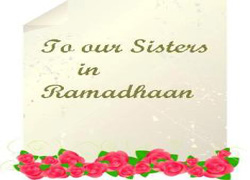 | An Urgent Message to My Muslim Sisters in Ramadan-IIWomen and Taraaweeh Prayer: Ramadan is distinguished over other months by the Taraaweeh prayer. Praise be to Allah The Almighty, many women and girls are keen to perform Taraaweeh prayer in the mosques. However,.. More | |
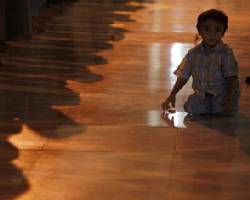 | Different Types of Women in Ramadan: Which One Are You? – ISome women spend most of their time in Ramadan in the kitchen and do not dedicate time to remembering Allah The Almighty or reciting the Quran. A woman in this category misses out on the reward.. More | |
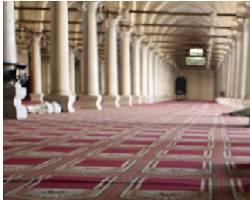 | Different Types of Women in Ramadan: Which One Are You? – IISome women go to the mosque just to spend some time out of their homes or to see some of their friends and acquaintances, not for the sake of praying. Such women might turn the prayer area into a place for private.. More | |
 | Advice to Women in RamadanO Muslim women, O protected pearls of the Ummah (Muslim nation)! I advise you to make a sincere intention to make the most of Ramadan, and to have good expectations of Allah The Almighty regarding your efforts at.. More | |
 | Time and the Muslim Woman in RamadanTime is a treasure that that is owned by the rich and the poor, and the prince and the commoner. However, it is regretfully a wasted treasure in the lives of many. Day and night follow each other and time passes.. More | |
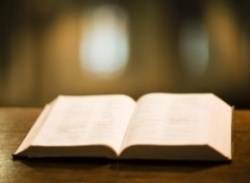 | Eleven means for women to combat hunger in RamadanDear sister, thinking of food and drink and the inability to combat hunger indicate that there is nothing that engages you or helps you fill your free time in Ramadan. This is why we offer you these ideas to help.. More | |
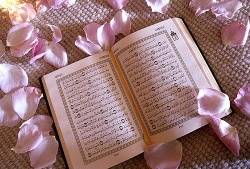 | The Muslim Woman and the Blessed MonthWhat joyous moments they are when you see crowds of Muslim men and women entering mosques for praying Taraaweeh or Qiyaam (night) prayers in the blessed month of Ramadan! It is a fascinating scene that kindles the.. More | |
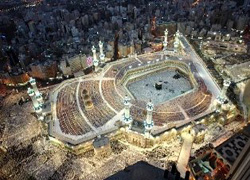 | I’tikaaf for Women‘Aa’ishah, may Allah be pleased with her, narrated that the Messenger of Allah, sallallaahu ‘alayhi wa salam, mentioned that he would observe I’tikaaf (seclusion in mosque for worship) in.. More | |
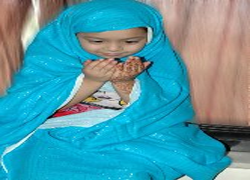 | A day in RamadanThis is a suggested program for your days during the month of Ramadan in order to help you better utilize your time in this blessed great month in a way that would get you closer to Allah Almighty. Respected sister!.. More | |
 | Ramadan…with baby!(Tips on making a mother’s fast last) Allah The Most High Says what means: "To Allah belongs the dominion of the heavens and the earth; He creates what He wills. He gives to whom He wills female [children],.. More | |
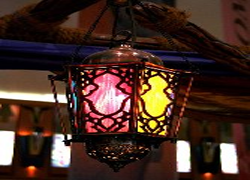 | Fasting womenWe are being approached by a month of mercy, forgiveness and salvation from Hell. It is the month of fasting, praying Qiyaam (the optional night prayer) and recitation of the Quran. It is a month during which rewards.. More | |
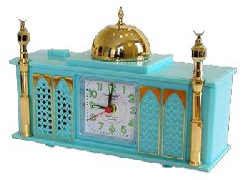 | Your time during RamadanTime is the essence of life, and man’s life is but the seconds and minutes he/she lives. Every hour we live through in this life takes us that much closer to our destiny in the Hereafter. Even though time.. More | |
 | Getting the most out of RamadanRamadan is a month of blessing, mercy and forgiveness that only comes once a year. Every good deed we do is multiplied many times giving us abundant rewards for the good things we do. We would be foolish not to.
For further information Please visit PART-II of World Muslim Women I.T.Operators Union (WMWITOU)
| |










 Videos
Videos 
No comments